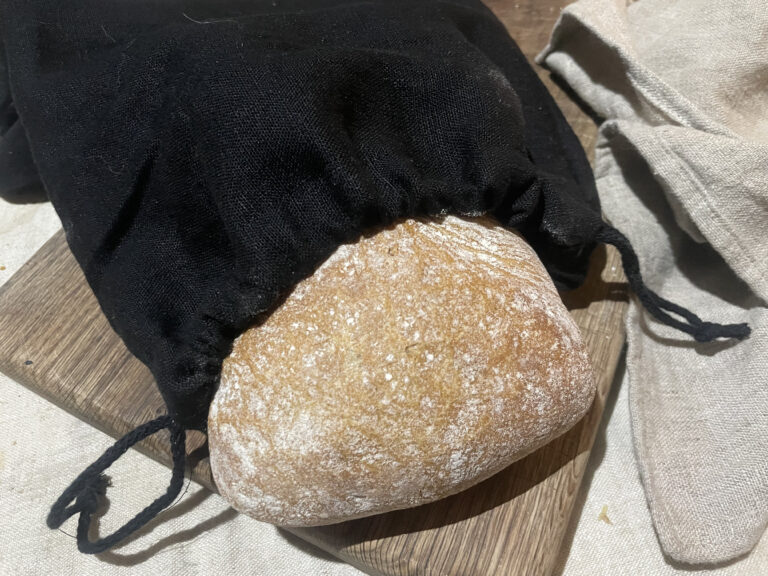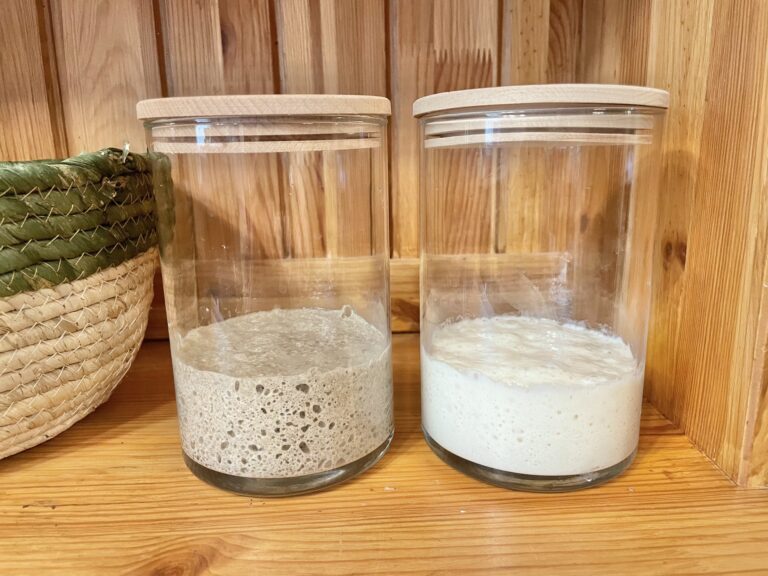While being a new mom, initially, baby wrapping might seem difficult. The very first time, it probably is. However, there are different ways to tie a wrap, and after finding a suitable tying technique, your skill level will be super high. I enjoy using a baby wrap for carrying the kids – it’s comfortable both with small newborns, a bit older babies, and even with toddlers. A baby wrap is irreplaceable while grocery shopping, and I probably don’t have to explain why. Now, speaking about back carrying, when my baby bump started growing while expecting a new baby, I felt the need to carry my older, one-year-old child on my back instead of on the front. Additionally, since it was springtime and I needed to start working in the garden, carrying the child on my back seemed like a more convenient option than carrying him on the front. And also the best way to do household chores while a toddler needs to be held is by carrying them on your back. Moreover, back carrying doesn’t exert excessive and uncomfortable pressure on the growing baby bump. I will explain the step-by-step instructions for sewing a non-stretchy baby wrap, also called a woven wrap.

There are so many different types of carriers and baby wraps, not to mention all the different materials and different colors. When the baby is small, it’s very pleasant to use stretchy wraps to wrap them against your body. It feels like wearing a shirt, and it’s a truly comfortable way to provide closeness to the baby while also performing household chores. For this purpose, a solly wrap is highly recommended for carrying infants. Although, bigger babies, older than one year, tend to become heavier, and a thin solly wrap may not be able to hold them properly. In that case, it’s worth switching to a stronger wrap – I use a boba wrap for carrying a toddler on the front. Although, in that age, it’s particularly convenient to carry them on the back. For this carrying method, a woven wrap made of non-stretchy fabric is, in my opinion, the best choice. You can also use a mei tai wrap, a moby wrap, or a baby sling wrap, for example. Additional information about baby wearing and different types of baby wraps is available here.
The good news is that there is a super easy way to turn this long length of fabric into your own baby carrier. The best thing is that you don’t have to make several baby wraps in different sizes. Regardless of the baby’s size or weight, this one-size woven wrap is suitable from birth to toddler age. The only thing you should pay attention to is that a smaller baby’s head should be supported, so you can’t use every tying method for infants.
Before starting, come and follow me on Instagram, Facebook, and Pinterest!
What Do You Need for Sewing a Baby Wrap
- A sewing machine – I still say that everything can be done by hand, including sewing, but the truth is that making several meters of hand-sewn stitches is a truly time-consuming task. But of course, it can be done if you have the desire!
- Pair of scissors – the sharper, the better!
- A long piece of fabric – shorter side 70 cm and long side 4m.
- Thread – the thread should be a color that matches the fabric.
- Pins – you can do without them, but it’s easier if you can secure the stitches with pins.
- Measuring tape – I didn’t need it at all because I already got the fabric in the right size from the fabric store, but it might come in handy in other situations when you already have the fabric at home earlier.
- Small noticeable fabric strip – this is also optional, but it can be used to mark the center of the wrap. Usually, when tying the wrap, it’s important to know where the center is.

Choosing the Right Fabric
I was also a bit confused in the fabric store about how to make the right choice for good woven fabric. In the end, I let my imagination run wild, felt different fabrics with my hand, made sure the fabric wasn’t stretchy, and chose a cotton fabric that had a pleasing appearance. The fabric material should be strong and natural like cotton or linen. This way, the fabric will last longer without wearing out, and cotton or linen are also breathable materials that won’t create a suffocating plastic bag feeling for the baby.
To prevent emergency situation, I would mention any slippery or stretchy fabric material as a poor choice. If the fabric is slippery, the knots won’t hold well, and the baby won’t be securely fastened. While I like stretchy baby wraps for carrying on the front, it’s very difficult to tie stretchy fabric on the back without the baby sliding down, so I definitely recommend getting non-stretchy fabric for carrying baby on the back.
Usually, fabrics in fabric stores are sold at a width of 150 cm. When cut in half, this measurement is the perfect width for a woven wrap. So when buying fabric, you have two options: you can buy 2 meters of fabric, cut it in half, and then sew the two halves together with a strong stitch. This way, there is no material waste, but there will be a seam in the middle of the wrap, which may not look visually appealing. The second option is to buy 4 meters of fabric, cut it in half, use only one half of the fabric, and sew something else nice from the other half. This way, you can also sew two identical wraps. I decided to go with the second option.
How to Make Your Own Baby Wrap
- Find enough space in the room and cut the fabric in half so that the shorter side of the fabric is in the range of 65-75 cm. As I mentioned before, the width of standard-sized fabrics is approximately like that when cut in half. If you chose a patterned fabric, cutting is quite easy, as you can cut straight line along the pattern. Cutting fabric without a pattern may be a bit more challenging, as you need to make sure the cut doesn’t slant and runs exactly through the center of the fabric. If necessary, pull a thread out from inside the fabric before cutting with scissors. This way, you can see where the stitching line will be and make a surged seam.

- After cutting, hem all four sides. Below, I will teach you step-by-step how to make a hem. I sewed the two longer sides first, and then the ends. This seemed visually the most beautiful option to me, but in reality, the order of sewing the edges doesn’t matter at all. Making a hemmed edge is very simple, and to prevent the edge from stretching out or going askew, I recommend using pins.
- Sew a small, easily distinguishable fabric strip into the center of the wrap to make it stand out. You can buy ribbons, crochet a small piece of string, or even cut a piece from another fabric.
- And there you have it—the baby wrap is ready! Wash the fabric before use to remove any dirt from the store.
How to Make a Hem
Hemming can be done with a fine or wider finish, but the general process for creating a hemmed edge remains the same. Essentially, it involves folding the raw edge of the fabric over twice to achieve a finished appearance.
- Place the fabric edge flat on the table. For some fabrics, it may be necessary to trim away the frayed edge, but in the case of my fabric type, it is not necessary as it doesn’t show or interfere in any way.

- Fold the edge up. The width can vary depending on your preference or need. I usually make a hem of approximately 7mm (eyeballing it), but in certain cases, the hemmed edge can be 2cm wide.

- Now fold the edge up once more, either with the same width as the first fold or wider.

- Secure the hem with pins or even thread, if desired.

Tips and tricks
- It’s a great option to use a patterned fabric (especially with a grid or stripes). It makes it easier to cut the fabric.
- Rougher and thicker fabrics are a great choice for a woven wrap.
- You don’t necessarily have to pin the hemmed edge, you can fold it as you go during sewing. However, be careful to ensure that the edge doesn’t become skewed.
- You can also use a woven wrap to carry the baby on the front.
On this page, you will find a wrap tutorial for carrying the baby on your back. Enjoy the bonding experience and the convenience of carrying your baby close to you with your DIY baby wrap!


How To Make Your Own Woven Wrap for Babywearing
Sewing a baby wrap is incredibly easy, and even those who don't sew regularly can easily manage it.
Materials
- A long piece of fabric - shorter side 70 cm and long side 4m.
- Thread - the thread should be a color that matches the fabric.
- Small noticeable fabric strip - this is also optional, but it can be used to mark the center of the wrap. Usually, when tying the wrap, it's important to know where the center is.
Tools
- Measuring tape - I didn't need it at all because I already got the fabric in the right size from the fabric store, but it might come in handy in other situations when you already have the fabric at home earlier.
- Pins - you can do without them, but it's easier if you can secure the stitches with pins.
- Pair of scissors - the sharper, the better!
- A sewing machine - I still say that everything can be done by hand, including sewing, but the truth is that making several meters of hand-sewn stitches is a truly time-consuming task. But of course, it can be done if you have the desire!
Instructions
- Find enough space in the room and cut the fabric in half so that the shorter side of the fabric is in the range of 65-75 cm.
- After cutting, hem all four sides. I will teach you step by step how to make a hem.
- Sew a small, easily distinguishable fabric strip into the center of the wrap to make it stand out.
- And there you have it—the baby wrap is ready! Wash the fabric before use to remove any dirt from the store.





